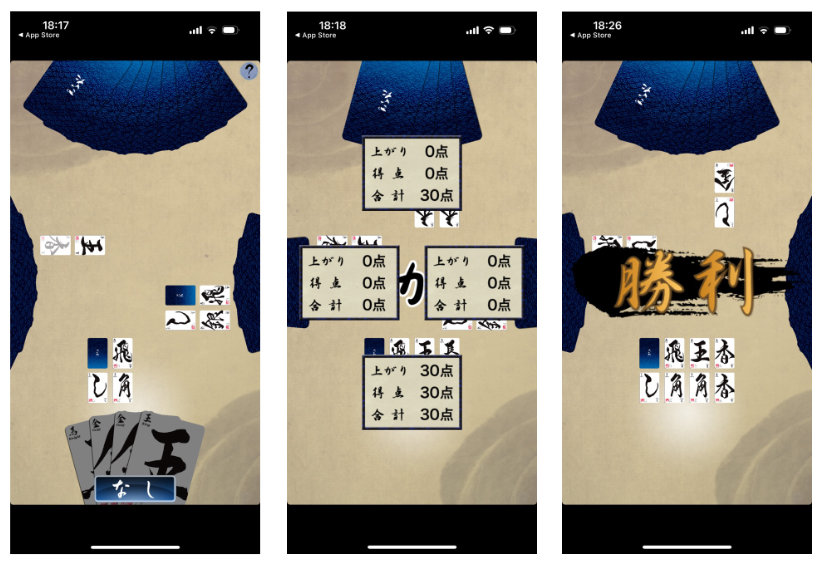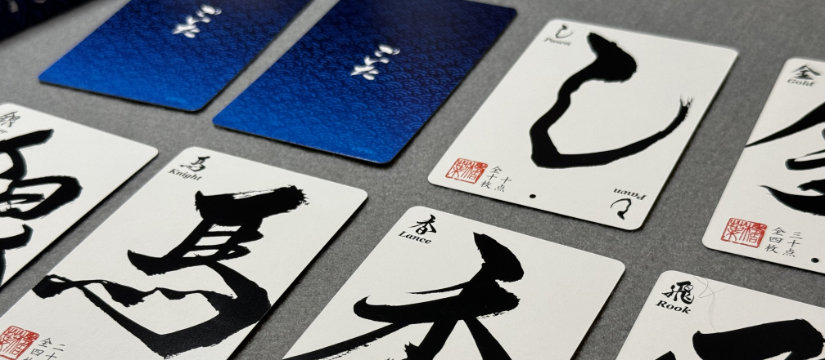I first heard of the game Goita at Cafe Subbox in Nagano and picked up a copy there. Originating in the Ushitsu region of Noto Peninsula around 1900, Goita is a game played with shogi-like tiles or cards with four people split into two teams. The goal is to be the first player to play all their cards, with the last card determining points scored. There are several variant win conditions that add complexity.
In the Box
Being a traditional game, there are multiple publishers of Goita. The one I have is from Ten Days Games and consists of thirty-two cards, four reference cards, and four score cards. The rules fit on a single small two sided sheet of paper.
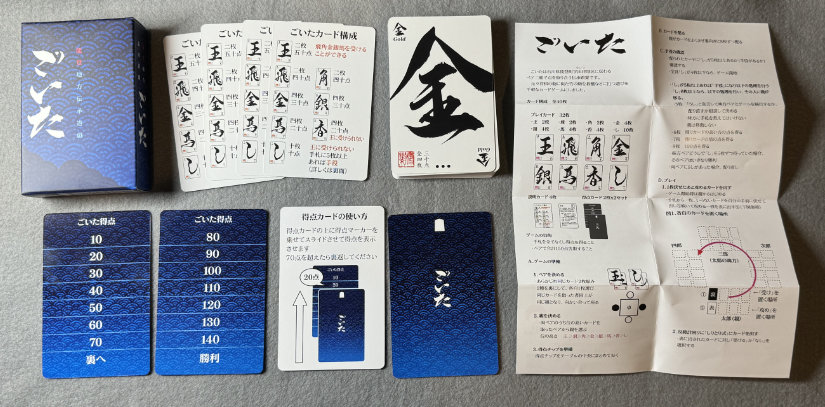
The cards feel nice in the hand and are well thought out. The center of the card is kanji and indicates the type, but there’s an English name at the top left and the the number of cards in the deck plus their point value in the bottom left, which are nice touches. The cards are composed of:![]()
- King – 50 points – 2 cards
- Rook – 40 points – 2 cards
- Bishop – 40 points – 2 cards
- Gold – 30 points – 4 cards
- Silver – 30 points – 4 cards
- Knight – 20 points – 4 cards
- Lance – 20 points – 4 cards
- Pawn – 10 points – 10 cards
The point tracking cards come in pairs; one with numbers up to 150 labeled in increments of 10 and the other used to track the current score.
Rules
Players split into two pairs that sit opposite each other so that teams alternate going around in a circle. The lead player deals eight cards facedown to each player.

Players then check if they have five or more pawns in their hand. If so, their options change based on the number of pawns: five total and they can choose to continue or redeal. Six or more, and the handling depends on the total cards, and the player becomes the lead player. Six pawns and the they get points for their highest remaining card. Seven pawns and they get double points for their last card. Eight cards and they get 100 points. If both players on a team of five pawns, they immediately win the game.
The lead player begins by placing one card face down and a second card (the attack card) face up. Going counter-clockwise, the next player may meet the attack by playing the same card or pass. Players on the same team will usually want to pass if the attack is coming from a team mate. Meeting an attack can be done by playing the same card or a King, unless the attack comes from a Lance or Pawn. If a player meets an attack, they then play a second card to attack. Importantly, the King cannot used for an attack except in certain circumstances.
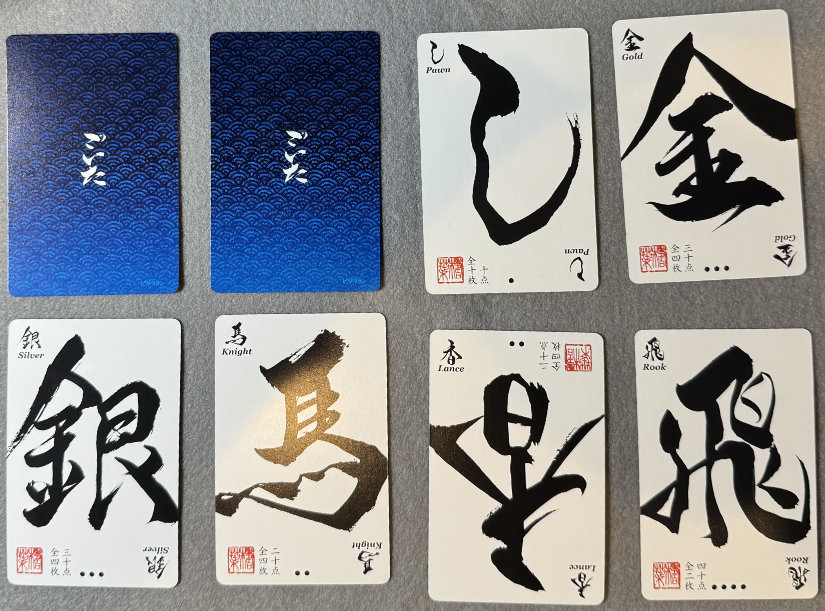
If no other players can meet an attack and it returns to the attacking player, they play a card face down and another face up attack card, starting the process again. The first player to play all of their cards gets points for their last card and the round ends. If their second to last card is the same as their last card, they get points for both. This player becomes the lead player cards shuffled and dealt again. The game continues until one team gets 150 points.
Play
Needing exactly four players kept it from my table for a while, but I finally got a chance to play when two friends came to visit. We enjoyed playing several games of it, and one friend wanted his own copy. Not knowing your partner’s hand leads to extra tension, as you’re trying to read both your opponents and ally.
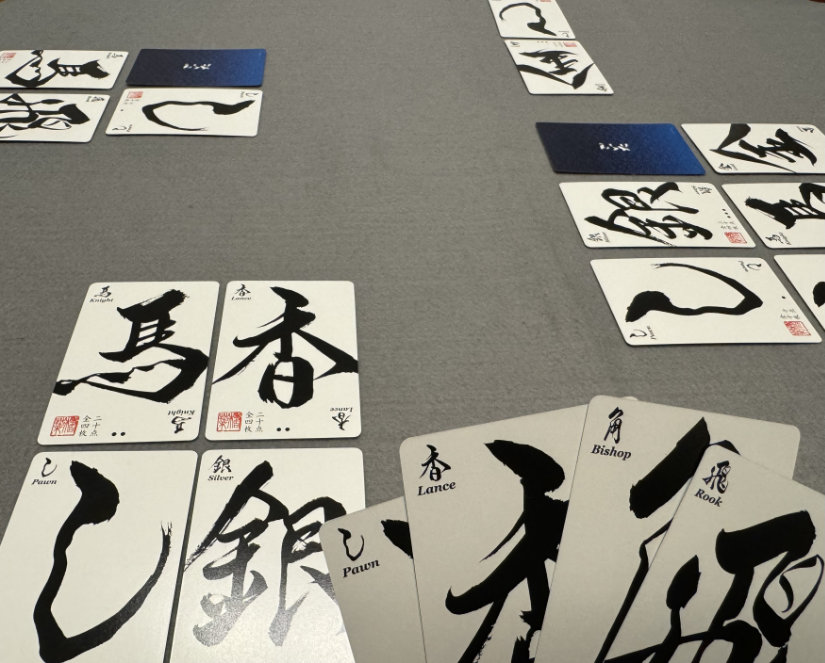
Acquiring
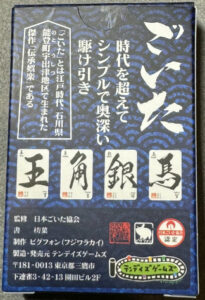 The Noto Goita Association is responsible for maintaining the rules and certifying games published by companies. The version of the game I have is from Ten Days Games and retails for ¥1,650.
The Noto Goita Association is responsible for maintaining the rules and certifying games published by companies. The version of the game I have is from Ten Days Games and retails for ¥1,650.
There’s also a free iOS app with AI opponents that you can play against. I’ve played a few games, and it was easy to use. The UI and instructions are Japanese only, but the text is limited and playable options highlighted. The “なし” button allows you to pass your turn without playing a card.
